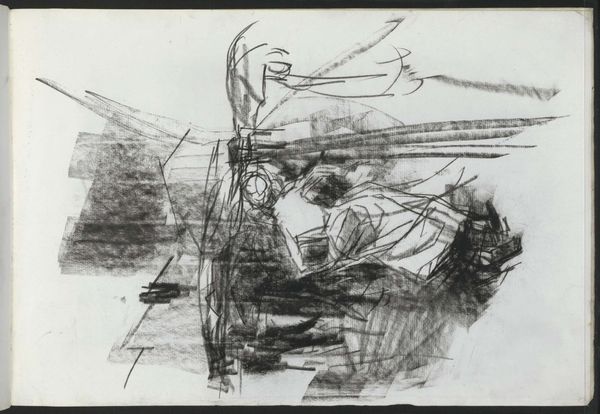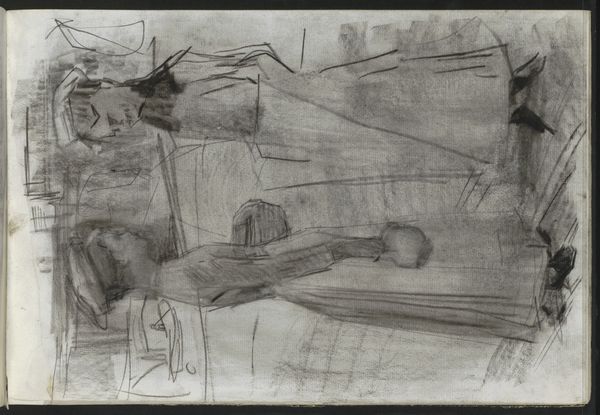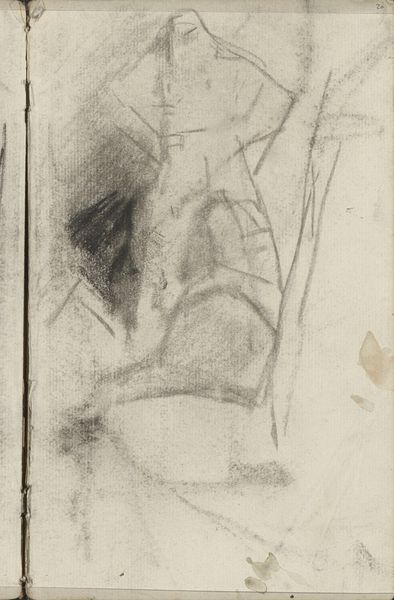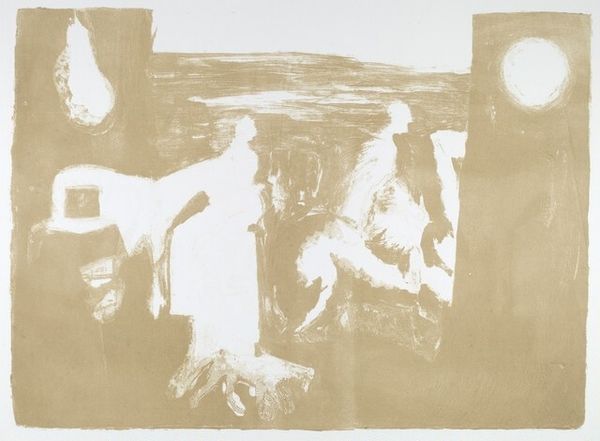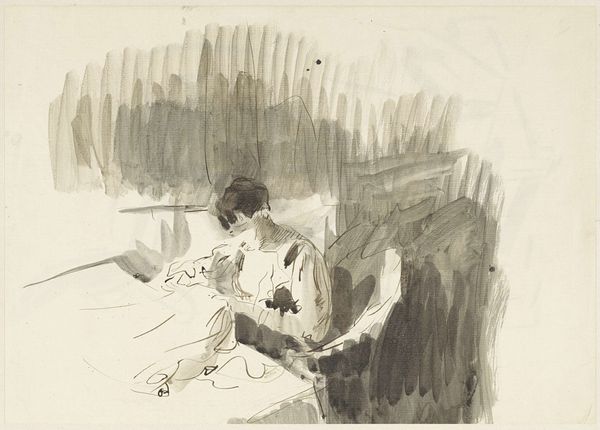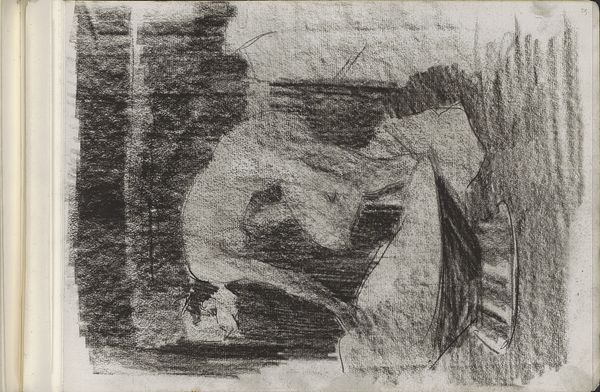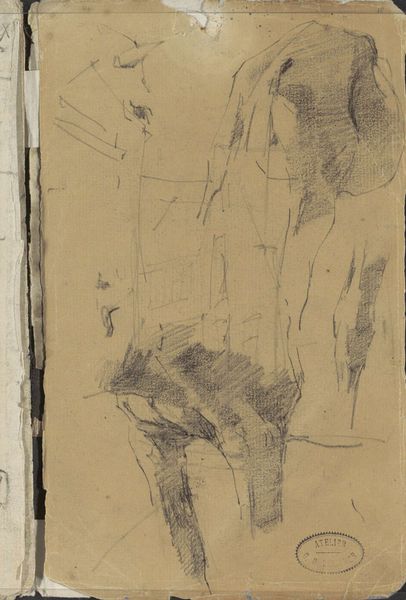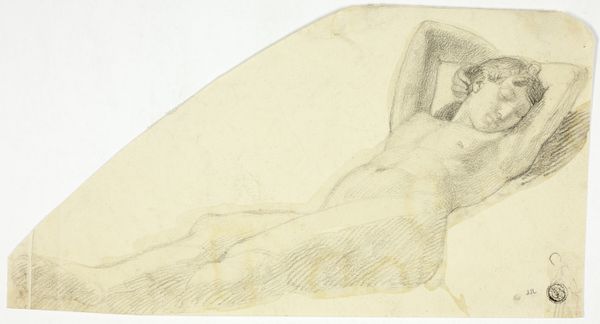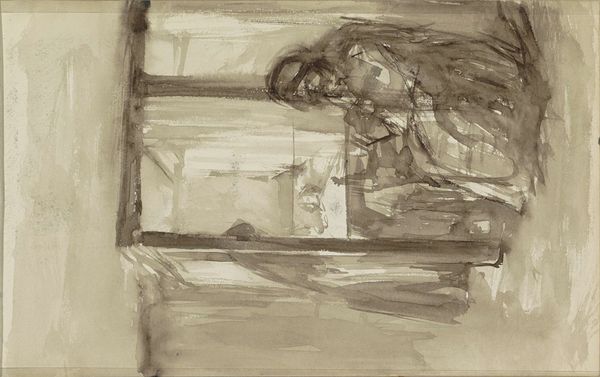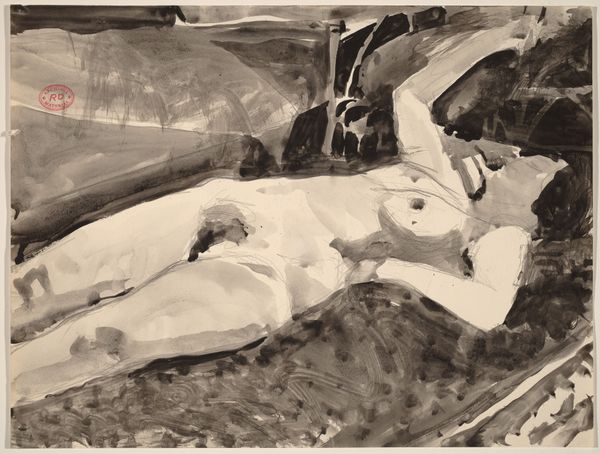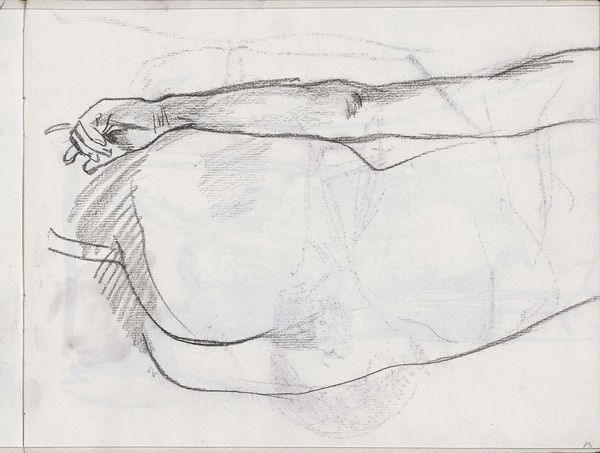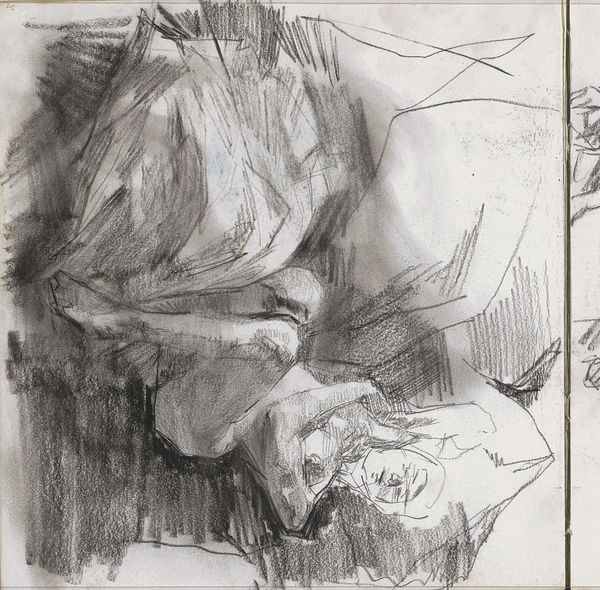
drawing, print
#
drawing
# print
#
figuration
#
nude
Copyright: National Gallery of Art: CC0 1.0
Curator: We're looking at "Interior," a 1963 print and drawing by John Henry Rock. The work presents an interior scene containing a nude figure. What are your initial thoughts? Editor: It feels immediately vulnerable. The muted tones and blurred lines create a sense of unease, as though we're intruding on a private, possibly painful, moment. Curator: I agree. It's vital to consider the time this was created. In the early 1960s, depictions of the nude female form were fraught with societal expectations and objectification. How do you see this work fitting, or perhaps disrupting, that historical context? Editor: Rock seems less interested in idealized beauty, and more invested in exploring the physical experience of being in a body, perhaps in conflict. Look at the texture – the roughness of the print, combined with the charcoal lines. Curator: Yes, he skillfully combined the precision of printmaking with the gestural freedom of drawing. It brings a rawness to the piece. He appears focused on capturing the materiality of the form rather than sanitizing it. What implications might the "Interior" have in terms of spatial awareness, particularly within the broader discourse of gendered spaces during this period? Editor: Well, domestic spaces, were obviously heavily gendered during this time period, and the reclining nude, traditionally a symbol of leisure and ownership, here becomes… trapped, perhaps. The obscured forms around her suggest barriers, both physical and emotional. There is an air of constraint here. Curator: Precisely. The material process emphasizes the tension inherent in the female body, perceived not just as aesthetic object, but existing within patriarchal and artistic traditions. We need to analyze it within those confines to understand the complexity of its presentation. Editor: I agree. Thinking about the choices the artist made—the layered media, the specific color palette—opens up many avenues for exploration regarding social narratives of the time, not only of women in that society but domestic work in the house or even mental wellbeing of domestic settings during the time this art work was produced. Curator: Absolutely. It really demonstrates the complex relationship between representation, materiality, and societal power structures. It provides layers of commentary. Editor: It certainly leaves you with plenty to consider.
Comments
No comments
Be the first to comment and join the conversation on the ultimate creative platform.
